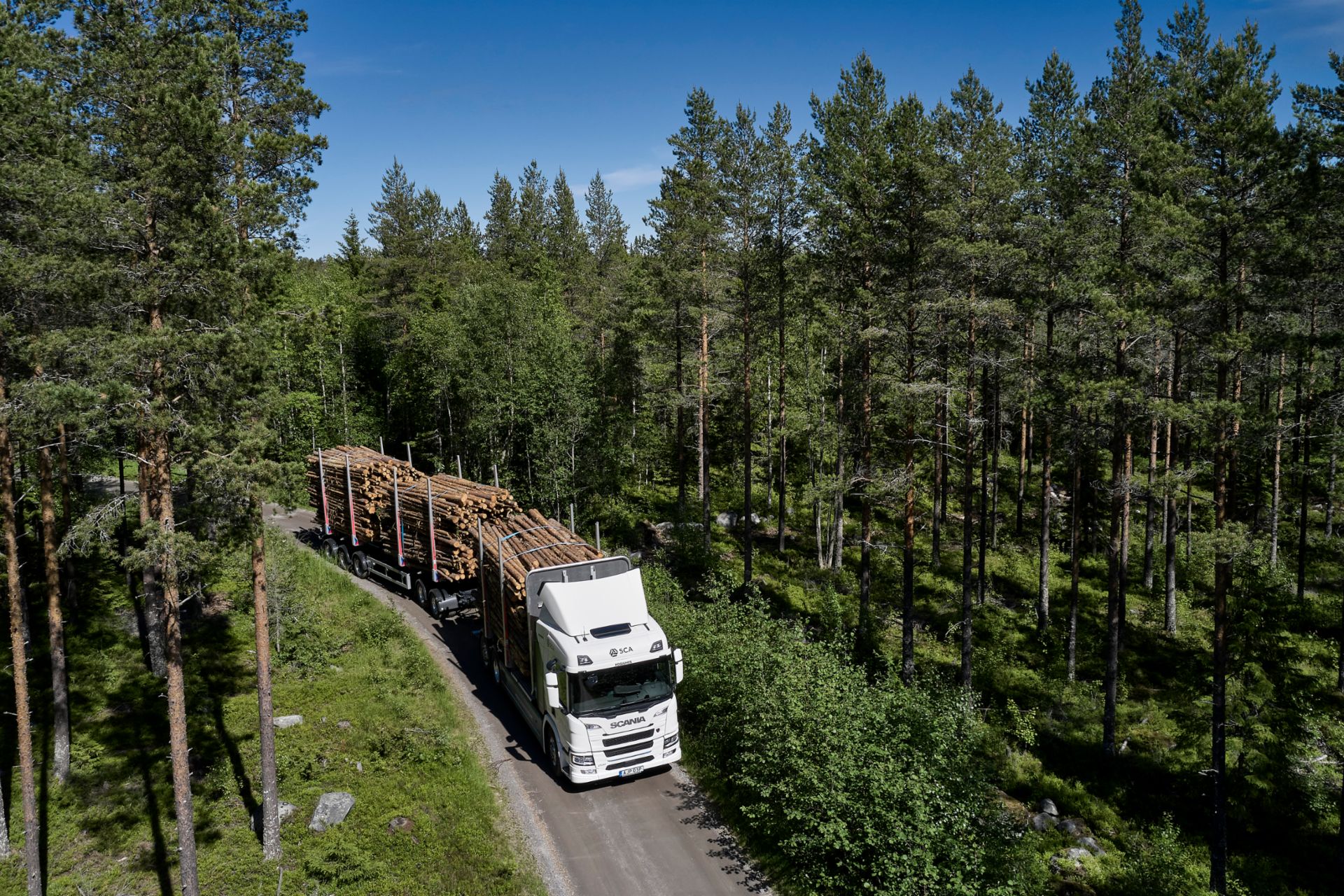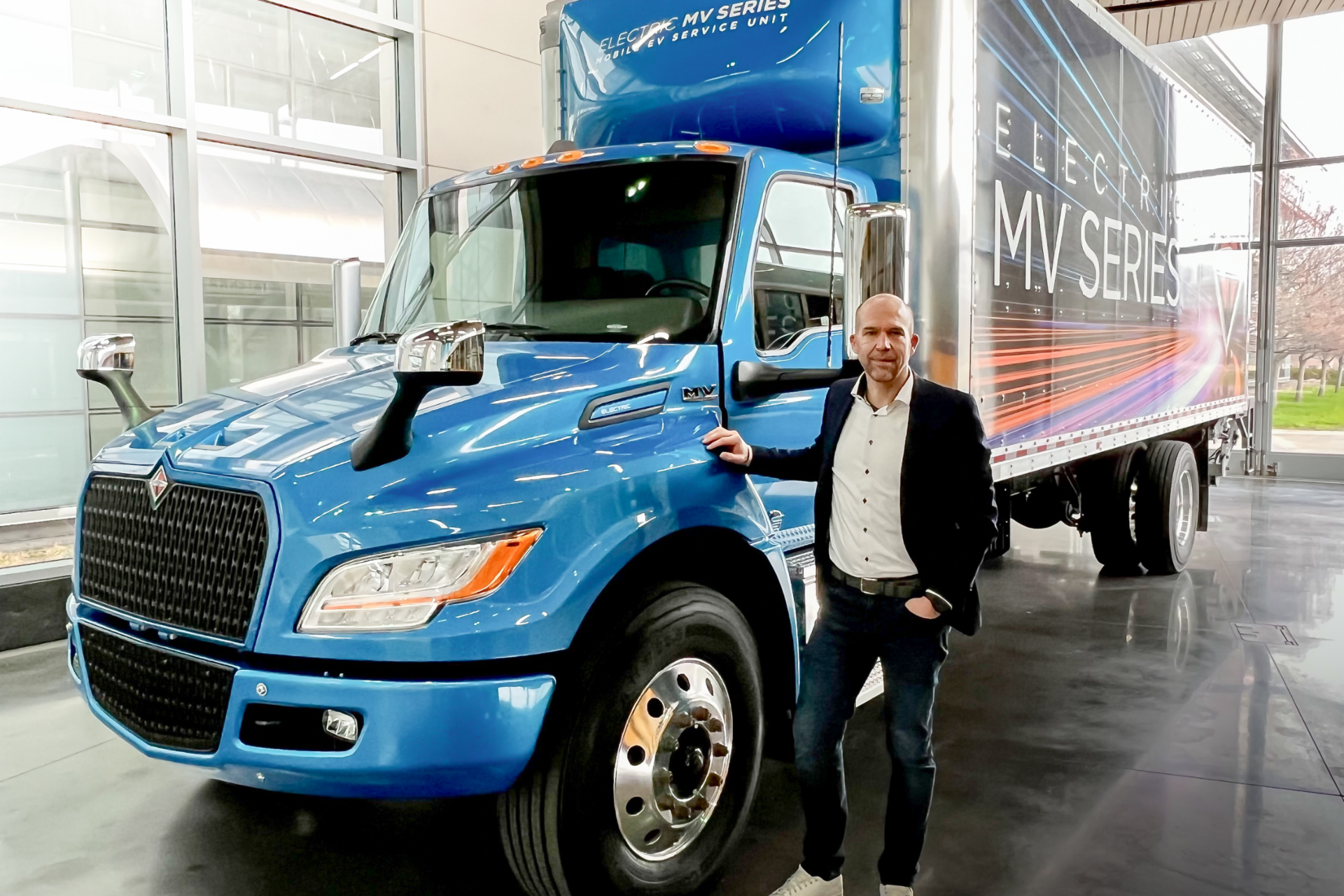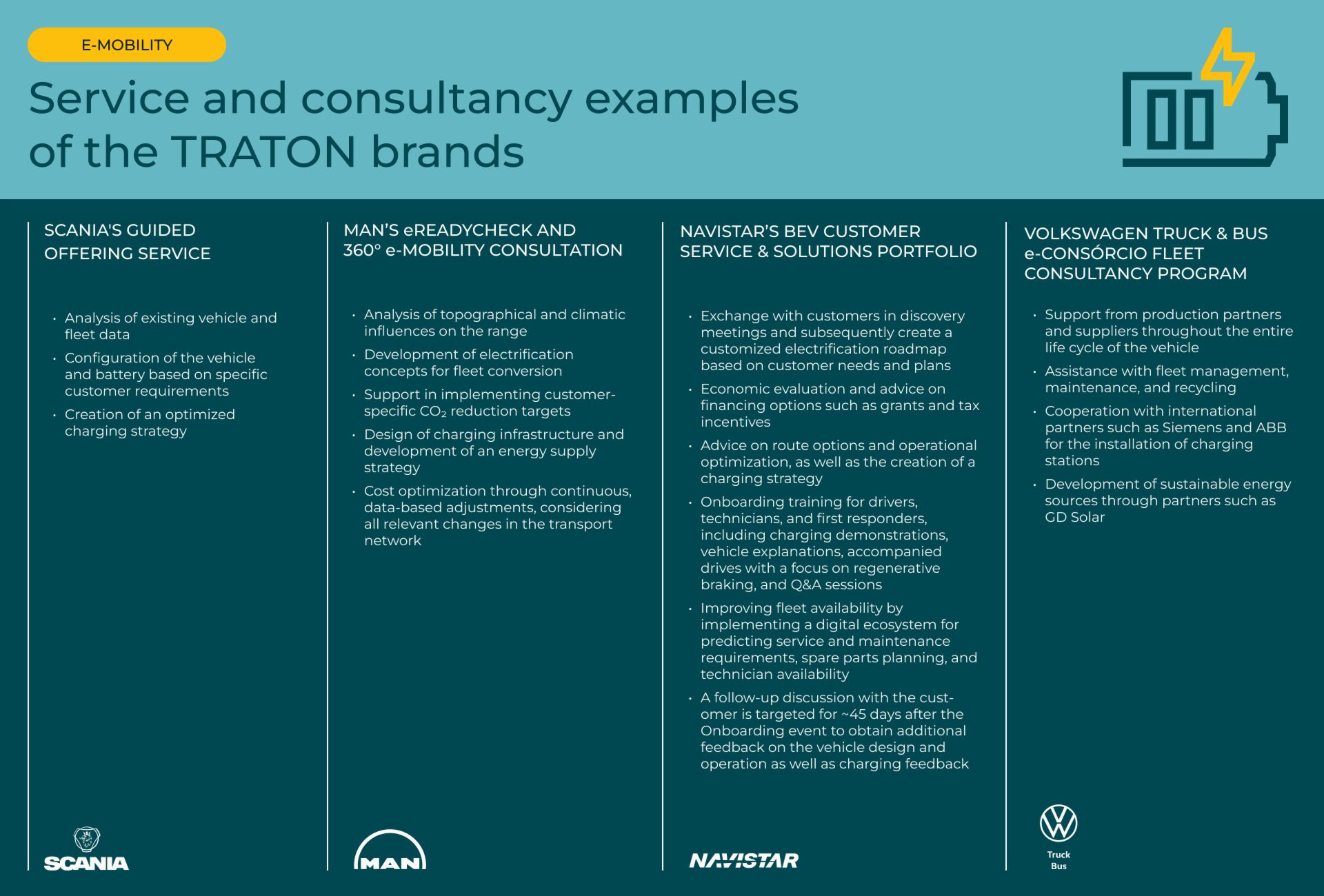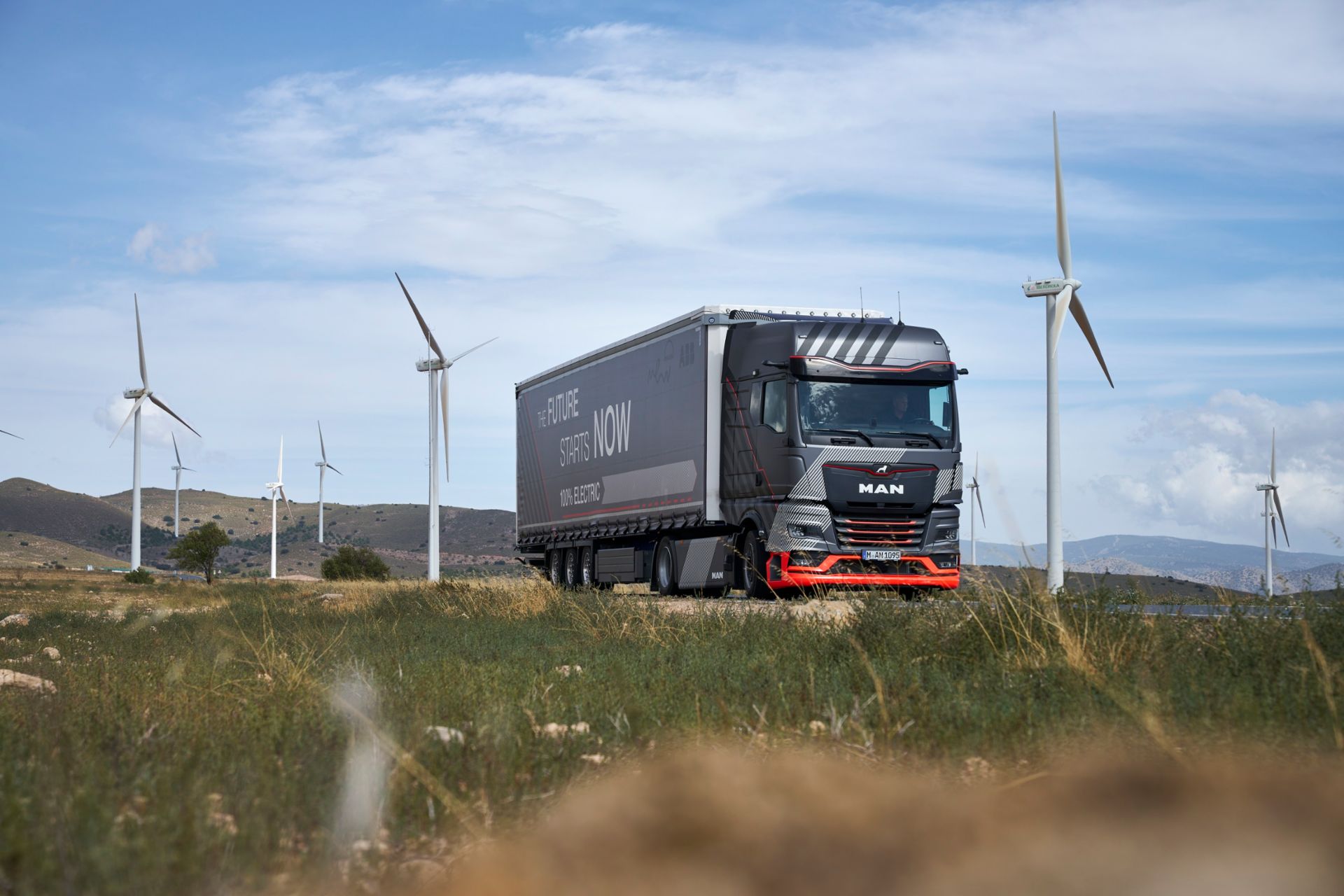The switch to battery-powered commercial vehicles is a challenging task, and the TRATON GROUP’s brands are providing their customers with comprehensive support throughout this transition. This includes selecting which routes should be electrified, choosing suitable vehicles, developing an optimal charging strategy, determining which infrastructure is required and support with installation, as well as onboarding employees.
This process includes direct discussions with customers to understand their individual motivations for switching to electric mobility and to identify any concerns. For Stefan Sahlmann, Vice President EV Solutions & Activation at Navistar and former Vice President, Head of MAN Transport Solutions at MAN Truck & Bus, these conversations are crucial for finding the best solution for fleet electrification. According to Sahlmann, this approach is the only way to develop customized solutions tailored to each customer’s specific needs and infrastructure. “We no longer just sell the vehicle; we offer comprehensive solutions that optimally support our customers in the transition to electromobility,” says Sahlmann. “We support our customers throughout the entire process, from the initial considerations and planning through to implementation and beyond.”
The overarching goal, for TRATON’s brands and many of its customers, is to transition their fleets to zero-emission vehicles in the future. However, achieving this requires appropriate planning and preparation. Early discussions with customers and dealers, one to two years in advance, can help plan as they decarbonize their operations. Before selecting vehicles and planning implementation, it’s essential to determine which routes can be electrified and where the use of battery electric commercial vehicles (BEVs) is practical.
“The electrification concepts that we offer at Navistar are based on telematics data provided by the customer. This includes information about the route network, journeys, and schedules, which are analyzed in detail. To optimize operating costs, a charging strategy is defined based on the availability of the bus or truck which aligns with the customer’s needs and can be supported through the proper charging infrastructure. Environmental factors, such as topographical and climatic conditions, are also included in the planning to ensure drivers can get the maximum range out of the vehicles each day. All of this serves to optimize their efficiency,” explains Sahlmann.
Scania also relies on open dialog, thorough analysis, and the inclusion of telematics data from existing operations when developing individual electrification concepts. This data can provide answers to important questions that need to be addressed before switching to BEVs.
“It is important to coordinate and adapt the routes and planning in a way that enables efficient operation and a good charging strategy. Just like Navistar, we at Scania offer our customers a partnership approach and comprehensive advice. This includes using vehicle data from existing operations to create the best possible plan for our customers to electrify their fleet,” says Fredrik Allard, Senior Vice President and Head of E-Mobility at Scania.
The analysis of telematics data helps answer some of the most important questions in advance, facilitating the development of a successful electrification concept:
- Route planning: Which routes can be electrified?
- Vehicle configuration: What does the optimal vehicle look like, in terms of battery size and performance, and what software is required?
- Pilot projects: Which routes should be prioritized for initial implementation?
- Charging infrastructure: Where are charging stations needed?
- Energy availability: What charging infrastructure can be installed?
- Public charging stations: Is there sufficient availability along driving routes?
Comprehensive portfolio of solutions and services for the TRATON GROUP’s brands
To ensure a seamless transition to BEVs for customers, the TRATON GROUP and its brands offer a wide array of comprehensive solutions and services.
Among other services, they offer assistance in advance with regard to finding suitable financing and access to state subsidies. “It’s quite complicated for our customers to navigate this landscape. That’s why we find out which public subsidies are available for them. By determining how these various funding programs can be combined, we help our customers to successfully make the switch to e-mobility,” explains Sahlmann.
To prepare customers, fleet managers, drivers, and technicians for the daily use of battery-electric mobility, the service portfolio of the TRATON brands includes comprehensive service and training offerings as part of the onboarding process. Even after the vehicle has been handed over, the TRATON GROUP remains available to address questions and provide assistance during operation.
Examples of service and consultancy available from the four TRATON GROUP brands:
-
Scania’s Guided Offering Service, initially developed for optimizing the use of classic trucks, now extends its coverage to vehicle segments, including electric vehicles. Utilizing obtained data, the service enables the selection of appropriate vehicle and battery configurations while creating charging strategies. This offering streamlines the process for customers and tailors the vehicle to their specific requirements. This data-supported solution always recommends the best vehicle. If a Scania customer who previously used a traditional truck with a combustion engine expresses interest in purchasing the same vehicle again, it would be straightforward to fulfill that request. However, the Scania Guided Offering Service prioritizes recommending the best vehicle for the customer’s needs. For example, the recommendation might indicate that the customer could save a significant amount of money over the vehicle’s lifetime by opting for a battery-electric powertrain instead. Leveraging usage data from the previous truck, the service helps the customer in transitioning to a new, more advantageous vehicle.
-
With MAN eReadyCheck and its 360° e-mobility consultation, MAN is also focusing on individual customer needs. Before customers decide to electrify their fleet, they should ensure that BEVs are fundamentally suitable for their company. Using the MAN eReadyCheck online tool, customers can assess the electrification potential of their fleet in advance based on data such as vehicle type, payload, ambient temperature, and urban or interurban traffic. MAN Transport Solutions’ 360° e-mobility consultation service specializes in developing the right concept together with the customer. This includes evaluating which routes can be covered by BEVs and whether their operation is economical. Through this service, MAN supports its customers in realizing their CO₂ reduction goals by designing individual logistics concepts, planning the charging infrastructure, and developing an energy supply strategy. MAN’s e-bus customers have also benefited from this service, which has been successfully on the market since 2018.
Find out more about MAN eReadyCheck here. -
Navistar’s BEV Customer Service & Solutions portfolio is another example of close and constructive cooperation with customers in the TRATON GROUP. This training and service program supports Navistar customers in the planning, implementation, and optimization of zero-emission vehicles, as well as in making service and maintenance investments throughout the entire life cycle of their vehicles.
-
Volkswagen Truck & Bus’ (VWTB) fleet consultancy program is specially tailored to meet customers’ needs and aims to achieve the best possible total cost of ownership (TCO) for them. This program utilizes data from maintenance contracts alongside telematics data to optimize fleets and improve profitability. Additionally, with the e-Consórcio, VWTB also created a comprehensive ecosystem for South America’s first BEV, the e-Delivery. The e-Consórcio is a network of production partners and suppliers that supports customers throughout the entire life cycle of their BEV in areas such as product, infrastructure, sustainable energy, fleet management, maintenance, recycling, and financial services.







